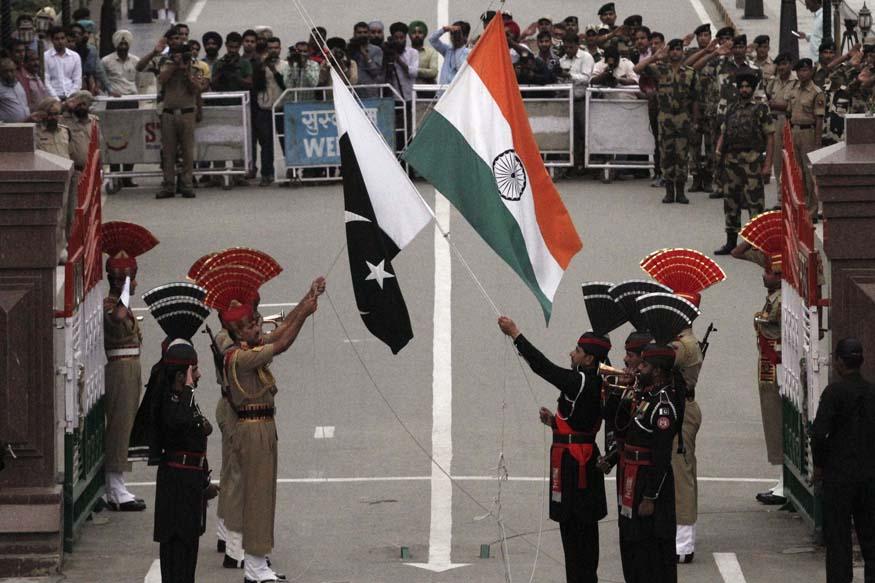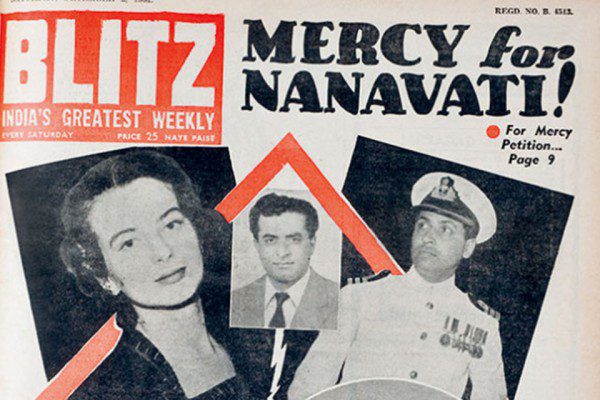To talk in terms of these grand narratives of nationalism- Hindutva versus secular, civic versus ethnic, is to miss the point, says Utsa Mukherjee.
Nationalism is in the air these days, or at least the talk of it certainly is! Students, writers, Bollywood actors, academics, journalists or even entire universities and media houses have been accused of perpetrating, or sponsoring the pursuit of, such lines of enquiry that are devoid of ‘nationalism’. Questions have rightfully emerged, in these contexts, as to who is labelling whom, on whose behalf and on what grounds or what larger purposes are being served in the process. These questions have been at the centre of attention for the past several months, and political commentators and activists alike have engaged in heated public exchanges. In this mud slinging, we haven’t spared much thought as to how we make sense of ‘nationalism’ and most importantly how does the N-word seep into the political capillaries of the citizenry.
For the vast majority of today’s Indians, who were born post-independence, the nation-state of India with its written constitution serves as a given, or an a priori formulation.
The notion of nationalism is invariably tied up with the political logic of nation-states. We inhabit a world order where this political logic has been so naturalised in the course of the last several decades that its legitimacy is increasingly been taken to belong outside the realm of debate or contestation. For the vast majority of today’s Indians, who were born post-independence, the nation-state of India with its written constitution serves as a given, or an a priori formulation. Therefore, in order to understand or interrogate the prevailing talk of ‘nationalism’ and its scalar attributes one must take account of these multiple contexts.
We reproduce the nation and ourselves as its citizens on a daily basis, by means of a set of everyday beliefs, practices, assumptions, emotions, habits and representations. The most apparent manifestation of its pedagogic aspect is of course the school education system that drafted us all into a set of beliefs, assumptions, practices and representations by which we learnt the clichés of ‘unity in diversity’ and the circulation of a quasi-divine and feminine imagery of ‘mother’ India.
The insistence on the legitimacy of the nation-state as the sole arbiter of the world order has made sure that an ideological and moral aura attends the very notion of nationalism. Nationalism, as Michael Billig
[1] has argued, is endemic in today’s world. It cannot be understood solely by means of the grand macro-narratives of flag-waving warfare, for it instead pans out through embodied practices of everyday life.
Needless to say that such an aura has particular post-colonial inflections in the context of India. It punctuates our daily, humdrum lives in ways we do not even register. The recent flurry of debates and controversies in India has reinforced the idea that what was debated wasn’t far removed from what our banal, everyday lives entail. We reproduce the nation and ourselves as its citizens on a daily basis, by means of a set of everyday beliefs, practices, assumptions, emotions, habits and representations. The most apparent manifestation of its pedagogic aspect is of course the school education system that drafted us all into a set of beliefs, assumptions, practices and representations by which we learnt the clichés of ‘unity in diversity’ and the circulation of a quasi-divine and feminine imagery of ‘mother’ India. This banality of everyday nationalism makes possible the constant re-drawing of the lines between ‘us’ and ‘them’, the articulation of home (land) and away, our sense of belonging to the nation and in turn the nation’s place within the global order.
But howsoever we are asked and almost compelled to reiterate the credo of diversity being the cornerstone of contemporary India, the establishment insists on a singular form of nationalism. And it is this that needs to be probed at length. If it is sheer plurality that lends a distinctive, even unique, character to Indian polity and culture, then it logically follows from this assertion that the constituents of that plurality ought to have their own ideas and modes of thinking. We need to recognise that every individual or group – of any denomination- is in his/her/its own right to embody divergent, even competing, modes of imagining the nation and their sense of place within it. This is not about Gandhi’s or Savarkar’s competing visions of India, it is about the lived and imagined Indias of the millions who constitute its geo-body. One’s subjective association with the idea of India may or may not be in agreement with someone else’s or even with that of the state. The everyday practices, be it the tricolour sticker on a taxi or a news anchor soliciting answers on behalf of the ‘nation’, are myriad and ubiquitous. But it is entirely up to individuals as to how they make sense of these, and how they negotiate their tellings of nationalism. A true celebration of plurality has to begin from this point of recognition rather than terminating here.
Whether we need any form of nationalism in the first place should be open to debate, so should the notion of how feasible the prospect of post-nationalism is in a world order that takes for granted the political logic of nation-states. But to talk in terms of these grand narratives of nationalism- Hindutva versus secular, civic versus ethnic- is to miss the point.
This lens of engagement has been in short supply in the past several months. One hears, with an unnerving frequency, how commentators pit constitutional or
civic nationalism versus cultural or ‘communalist’ nationalism. Or the pernicious reach of Hindutva is contested by means of an egalitarian, secular nationalism. Whether we need any form of nationalism in the first place should be open to debate, so should the notion of how feasible the prospect of post-nationalism is in a world order that takes for granted the political logic of nation-states. But to talk in terms of these grand narratives of nationalism- Hindutva versus secular, civic versus ethnic- is to miss the point. For instance, there are huge divergences amongst the adherents of Hindutva as well as amongst its critics as to what constitutes its core convictions or modus operandi. Strategic ideological formulations such as Hindu nationalism or constitutional nationalism do frame the larger discursive networks that engender the banality of everyday nationalism. But we equally need to take account of the creative, perhaps subversive ways, in which individuals make these strands their own. Some might even refuse to engage with these narratives.
How do we account for their telling of nationalism if we stay transfixed at the grand narratives?
The Indian democracy is mature enough to acknowledge and respect the fact that a thinking citizenry ought to have their own divergent, even contradictory, relationships with what India means to them. To throttle such multiplicity is to delve a body blow to cultural pluralism and democracy in India.
In a study of post-imperial Japan, Brian J McVeigh[2] had invoked the idea of different articulations of nationalisms being mere aspects of a singular phenomenon rather than being typologies of it. For him, the official and non-official ‘aspects’ of nationalisms in Japan would range from militarist, statist, imperialist and economic ones to those that can be termed ethnic, linguistic, aesthetic, religious and so on. This vast array of nationalisms, he goes on to argue, “interconnect, overlap, and resonate as well as collide, clash, and compete with each other”. Notwithstanding the explicatory efficacy McVeigh’s thesis might hold out for the study of Japan, in the case of contemporary India the acknowledgement of plural nationalisms need to traverse a different, albeit related, route. What has been argued throughout this article is the fact that the multiple tellings of nationalism, or in other words the differing modes of imagining the nation or one’s place within it are influenced by the grand narratives of nationalism that have names, but most importantly millions of Indians have their own creative or quaint ways of engaging with those narratives and producing their Indias. There isn’t or shouldn’t be any monolithic, singular or quasi-metaphysical constructs of nationalism that could be forced down the throats of its citizens through coercion or even worse through docile acceptance. The Indian democracy is mature enough to acknowledge and respect the fact that a thinking citizenry ought to have their own divergent, even contradictory, relationships with what India means to them. To throttle such multiplicity is to delve a body blow to cultural pluralism and democracy in India. A nation would reach a creative dead-end if all subjective engagements with the narratives of nationalism are put into a straitjacket. These multiple nationalisms should be debated and probed, rather than silenced or threatened. Every such articulation will have its own set of merits and demerits, but the solution does not lie in enforcing one’s subjective notions over the others. The task before us is to create and sustain a climate where one’s mode of imagination is not self-censored or fettered to partisan interests alone and where ideas, including those of nationalisms, could be freely discussed and debated.
References
[1] Billig, M. (1995) Banal nationalism. London: Sage.
[2]McVeigh, B. J. (2006) Nationalisms of Japan: Managing and Mystifying Identity. Lanham: Rowman & Littlefield publishers, INC.
Image via ibnlive.in
Related














